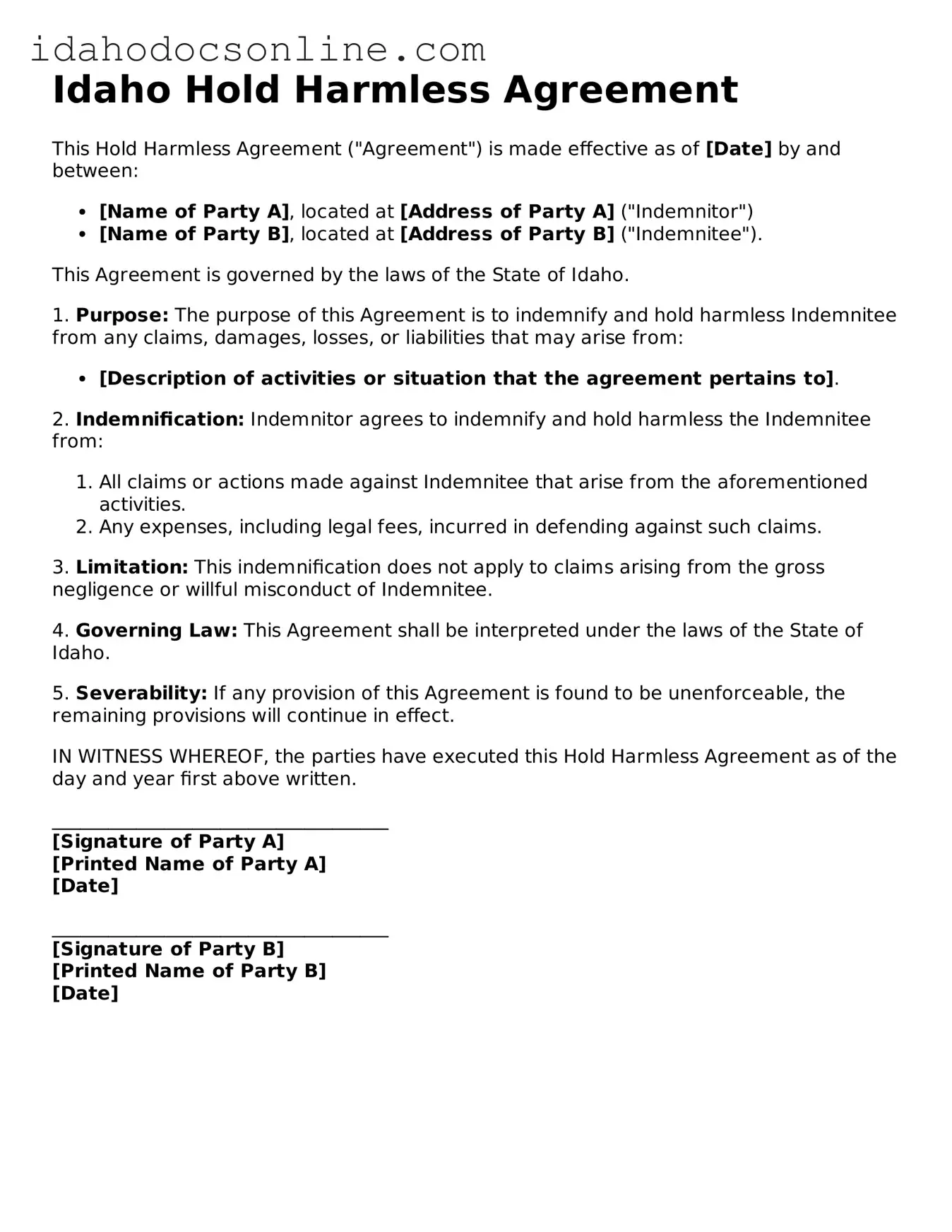Idaho Hold Harmless Agreement
This Hold Harmless Agreement ("Agreement") is made effective as of [Date] by and between:
- [Name of Party A], located at [Address of Party A] ("Indemnitor")
- [Name of Party B], located at [Address of Party B] ("Indemnitee").
This Agreement is governed by the laws of the State of Idaho.
1. Purpose: The purpose of this Agreement is to indemnify and hold harmless Indemnitee from any claims, damages, losses, or liabilities that may arise from:
- [Description of activities or situation that the agreement pertains to].
2. Indemnification: Indemnitor agrees to indemnify and hold harmless the Indemnitee from:
- All claims or actions made against Indemnitee that arise from the aforementioned activities.
- Any expenses, including legal fees, incurred in defending against such claims.
3. Limitation: This indemnification does not apply to claims arising from the gross negligence or willful misconduct of Indemnitee.
4. Governing Law: This Agreement shall be interpreted under the laws of the State of Idaho.
5. Severability: If any provision of this Agreement is found to be unenforceable, the remaining provisions will continue in effect.
IN WITNESS WHEREOF, the parties have executed this Hold Harmless Agreement as of the day and year first above written.
____________________________________
[Signature of Party A]
[Printed Name of Party A]
[Date]
____________________________________
[Signature of Party B]
[Printed Name of Party B]
[Date]
